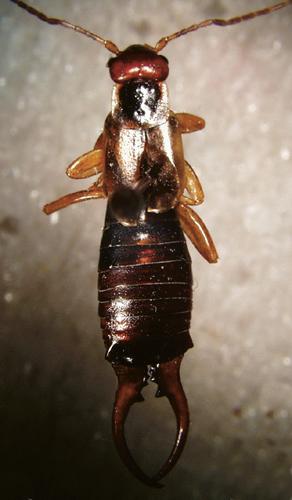
Earwigs are a common nuisance associated with solitary bee nests in the eastern US. In particular, the introduced European Earwig (Forficula auricularia), is commonly observed in humid areas where it scavenges in and around bee nest tubes during the summer—often eating pollen provisions, leaf nest materials, and sometimes bee eggs. Despite their appearance, the large pinchers located at the base of the abdomen are mostly harmless, although earwigs will bare them in a defensive posture if threatened (Figure A.18).
Earwigs can fly, but rarely do. They usually gain entry to free-standing nest shelters by crawling up the shelter legs, or via vegetation leaning against the shelter. Control is achieved by coating the shelter legs with a layer of automotive grease or a sticky insect barrier such as TanglefootTM.
